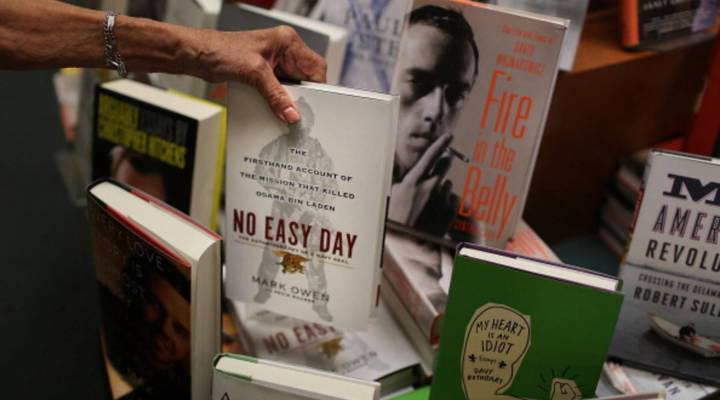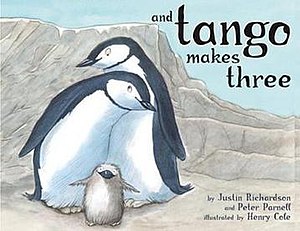
Banned books week: How the blacklist can goose a book’s sales

This week is Banned Books Week — an annual event sponsored by the American Booksellers Association, the American Library Association, the PEN Center and several other groups — to draw attention to literature that has been banned.
“There’s no such thing as bad publicity,” says R. Wolf Baldassaro, who writes the Banned Books Awareness blog. “As soon as you say ‘you can’t do something,’ it makes people want to do it more.”
Baldassaro points to an appearance by author John Grisham on “The Daily Show” in 2005, where Grisham said that challenges to his book “A Time To Kill” (1989), did “wonders” for his sales.
Chris Finan, president of the American Booksellers Foundation for Free Expression, says there’s a flip side. Finan says challenges to books are often confined to a school district or local library. Those challenges can cause intense pressure for authors, without translating into a notable uptick in book sales.
“A challenge is an awful lot of trouble to an author,” Finan said. “They’ve got to fight. They’ve got to organize. They’ve got to try and overturn the decision if a book has been banned.”
And Finan said whether or not there is a benefit often hinges on how high-profile an author is at the time of the challenge.
“A lot of these authors who are challenged are not famous,” Finan said. “Wealthy authors who sell a lot of books can hire publicists and attorneys to defend them, but your average mid-list author can’t. They’ve got to take these battles on personally.”
Here is a list of books that have faced challenges in recent years:
![]() “And Tango Makes Three (2005),” a children’s picture book about Roy and Silo, two male penguins raising an orphaned chick in New York’s Central Park Zoo, was number 5 on the American Library Association’s list: “Top Ten Challenged Books of 2012.” Tango has appeared on the list of challenged books almost every year since its release. In 2009, the book shot up Amazon’s bestseller charts, after repeated attempts to ban it raised the book’s profile. The top complaints against the book, according to the ALA are, “homosexuality” and “unsuited for age group.”
“And Tango Makes Three (2005),” a children’s picture book about Roy and Silo, two male penguins raising an orphaned chick in New York’s Central Park Zoo, was number 5 on the American Library Association’s list: “Top Ten Challenged Books of 2012.” Tango has appeared on the list of challenged books almost every year since its release. In 2009, the book shot up Amazon’s bestseller charts, after repeated attempts to ban it raised the book’s profile. The top complaints against the book, according to the ALA are, “homosexuality” and “unsuited for age group.” - John Green’s young adult novel “Looking for Alaska,” (2012) about a teenage boy who experiences profound life changes after starting boarding school, is number 7 on the ALA’s list of Top Ten Challenged books of 2012. Challenges include that the book uses “offensive language,” has “sexually explicit” scenes, and is “unsuited for age group.” The controversy doesn’t seem to have hurt Green’s sales at all. Three of his books, including “Looking for Alaska”, are currently among the top ten on the New York Times’ Young Adult bestseller list.
![]() Last week, the Randolph County Board of Education in North Carolina, voted 5-2 to ban Ralph Ellison’s “Invisible Man” (1952) after the mother of an 11th-grader complained the novel was “too much for teenagers.” Kimiyutta Parson’s full complaint can be found here. Then, on Tuesday, the school board announced it would reconsider the ban at a meeting later this week. The controversy doesn’t seem to have resulted in a spike to the book’s sales, but the novel’s publisher, Vintage Books, has agreed to donate free copies of “Invisible Man” to Randolph County students. The book is ranked 9,612 on Amazon’s seller list.
Last week, the Randolph County Board of Education in North Carolina, voted 5-2 to ban Ralph Ellison’s “Invisible Man” (1952) after the mother of an 11th-grader complained the novel was “too much for teenagers.” Kimiyutta Parson’s full complaint can be found here. Then, on Tuesday, the school board announced it would reconsider the ban at a meeting later this week. The controversy doesn’t seem to have resulted in a spike to the book’s sales, but the novel’s publisher, Vintage Books, has agreed to donate free copies of “Invisible Man” to Randolph County students. The book is ranked 9,612 on Amazon’s seller list. - Perhaps most notable is the number of blockbuster novels that have faced challenges in the past few years, including “Fifty Shades of Grey,” by E.L. James, Khaled Hosseini’s “The Kite Runner,” The Hunger Games Trilogy by Suzanne Collins, and Stephanie Meyer’s “Twilight.”
![]() Finally, because this is Marketplace, we were interested to see that a book about money — or the lack of it — recently joined the challenged books club. Barbara Ehrenreich’s bestseller “Nickel and Dimed: On (Not) Getting by in America,” (2001) was challenged (but retained) on the AP English reading list at Easton Area High School in Pennsylvania. Books Challenged or Banned 2012 – 2013, reports that residents called the book “faddish,” “obscene,” and of “no moral value.”
Finally, because this is Marketplace, we were interested to see that a book about money — or the lack of it — recently joined the challenged books club. Barbara Ehrenreich’s bestseller “Nickel and Dimed: On (Not) Getting by in America,” (2001) was challenged (but retained) on the AP English reading list at Easton Area High School in Pennsylvania. Books Challenged or Banned 2012 – 2013, reports that residents called the book “faddish,” “obscene,” and of “no moral value.”
There’s a lot happening in the world. Through it all, Marketplace is here for you.
You rely on Marketplace to break down the world’s events and tell you how it affects you in a fact-based, approachable way. We rely on your financial support to keep making that possible.
Your donation today powers the independent journalism that you rely on. For just $5/month, you can help sustain Marketplace so we can keep reporting on the things that matter to you.



 “
“ Last week, the Randolph County Board of Education in North Carolina, voted 5-2 to ban Ralph Ellison’s “
Last week, the Randolph County Board of Education in North Carolina, voted 5-2 to ban Ralph Ellison’s “









